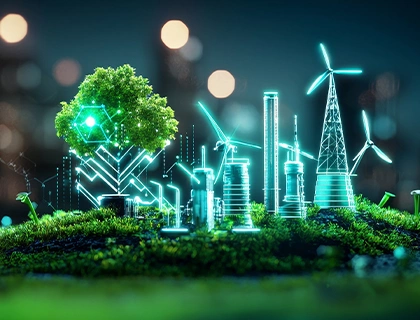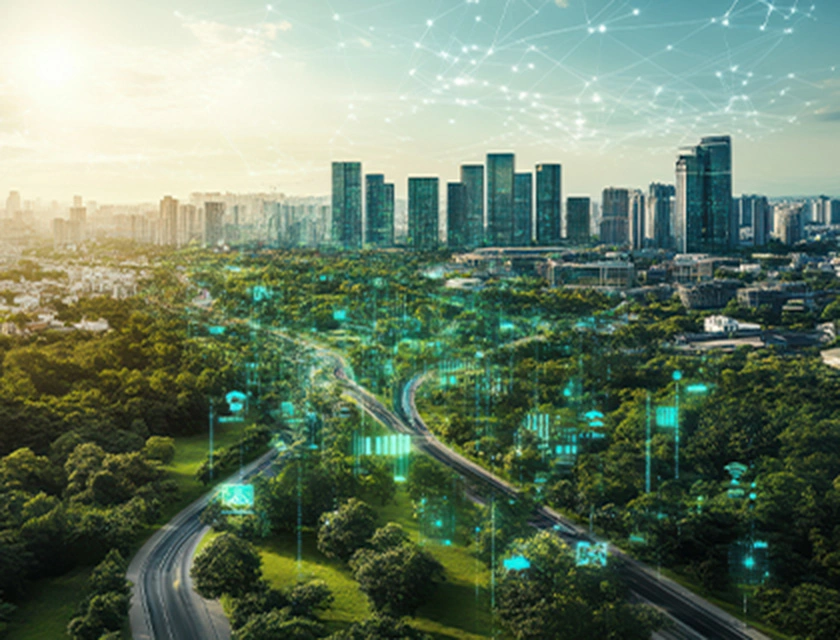
Climate change is presenting multiple, complex risks to physical infrastructure. Protecting those assets ensures business continuity and, in the case of network providers, provides critical access to connectivity for the people affected.
5 Mins
28th March 2025
Article
Sustainability
Despite the increase in extreme weather events caused by climate change, the number of lives lost to these events has decreased, in part thanks to the early warning systems that give people a chance to prepare.1
These systems alert people that a weather event is coming and their degree of risk, allowing them to secure assets, prepare defences or, in the worst cases, flee. They also provide information on the next best steps and safe passages once the risk has subsided.
Protecting the physical infrastructure that delivers these messages is essential to protecting the lives, assets and economies impacted by climate change.
Protecting digital infrastructure is another essential layer of this process. Taking protective measures in this case means embedding robust cyber security and choosing infrastructure products with security baked in such as Network-as-a-Service.
The nations of Singapore and Australia couldn’t be more different; one is vast and sparsely populated, the other compact and vibrant with people. But, like many countries, they share complex climate risks and must make mitigation plans to protect their people and economies.
Adopting climate mitigation and adaptation plans has allowed both countries to prepare for potential long and short term scenarios. This immediate and far-looking view has helped both nations achieve a high ND-GAIN index score. In these global rankings of climate vulnerability and preparedness, Singapore ranks top of the readiness score and Australia as the world’s 8th least vulnerable nation.2
A key measurement in the ND-GAIN vulnerability assessment is the strength of a country’s infrastructure in the face of disaster. In today’s hyperconnected world, it is physical infrastructure that has proved critical in delivering digital services that connect citizens to emergency services, protect assets and distribute resources to impacted areas.
In Singapore, surface water flooding and extreme heat present a risk to this infrastructure whereas Australia’s risks lie in bushfires and riverine flooding.3
To mitigate these risks, Singtel and Optus take a multipronged approach that is driven by climate modelling to predict risk up to the year 2100. Let’s look at the specifics:
Extreme heat
In preparation for extreme heat, Singtel will provide adequate cooling at exchanges to prevent functional failure from extreme heat. Onsite energy generation and batteries will also strengthen the resilience of energy supplies.3
Bushfires
In Australia, where bushfires occur, fire-resistant filters and new, concrete-based retaining walls will minimise the vulnerability of critical infrastructure. Much like the preparation for extreme heat, long-term adaptation includes renewable energy generation, battery storage and backup generators to strengthen energy resilience.4
Riverine flooding
Adaptive design for Controlled Environment Vaults (CEVs) will ensure they are resilient to riverine flooding. The height of CEV equipment will be raised3 and base stations will also be raised to at least 5m above sea level.5
Extreme weather events
Protecting physical infrastructure from other, unpredictable weather events can only happen alongside ongoing research with leaders in climate science. This allows for better prediction of localised events and more effective disaster response.
To further protect infrastructure in the long term, climate resilience is incorporated into business strategy. This ensures that double materiality can be achieved and business continuity is not impacted.
The cost of climate change will be huge with revenue, insurance premiums, disaster recovery and asset damage just the beginning.3 Businesses must plan for continuity by choosing infrastructure investments that have baked-in climate resilience.
Climate modelling has helped large scale companies prepare for this future. The technique helps leaders to envision a near and far future where various climate scenarios are played out and how they will impact their business.
Resilient infrastructure and partnerships with climate-aware companies will help companies prepare as these scenarios unfold.
Ready for tech-driven sustainability?
References:

Sustainability, Manufacturing and logistics, Digital transformation

5G, Sustainability, Connectivity

Sustainability, Manufacturing and logistics, Smart cities

Sustainability

Sustainability, Digital transformation

Sustainability, Data centre
Get the latest digest on business and technology trends straight to your inbox.